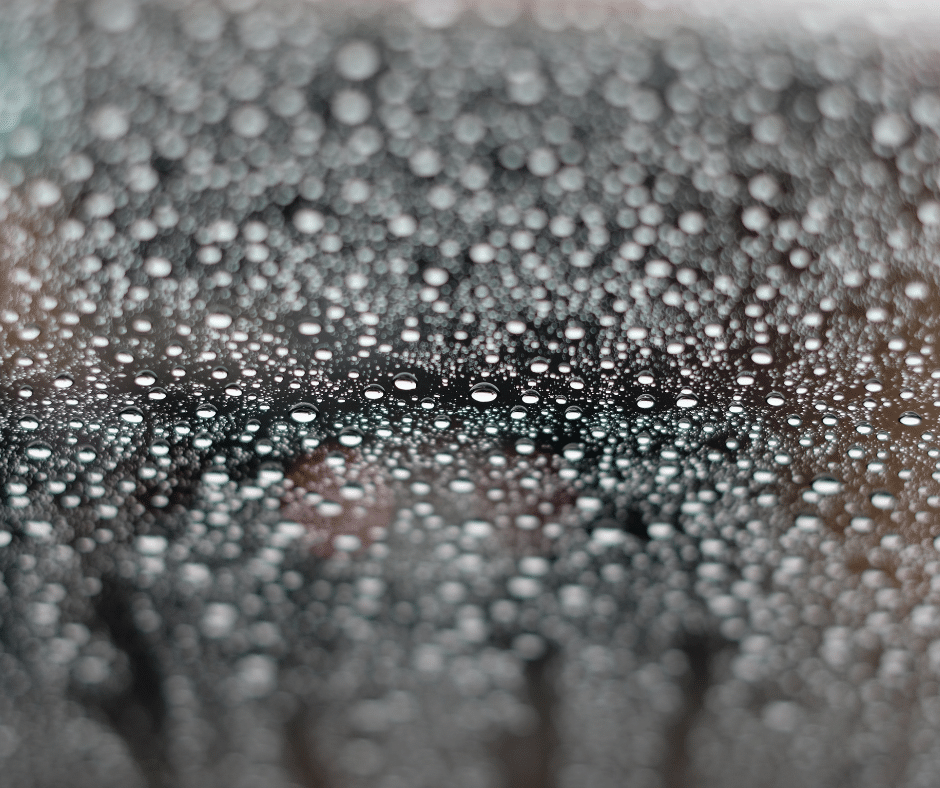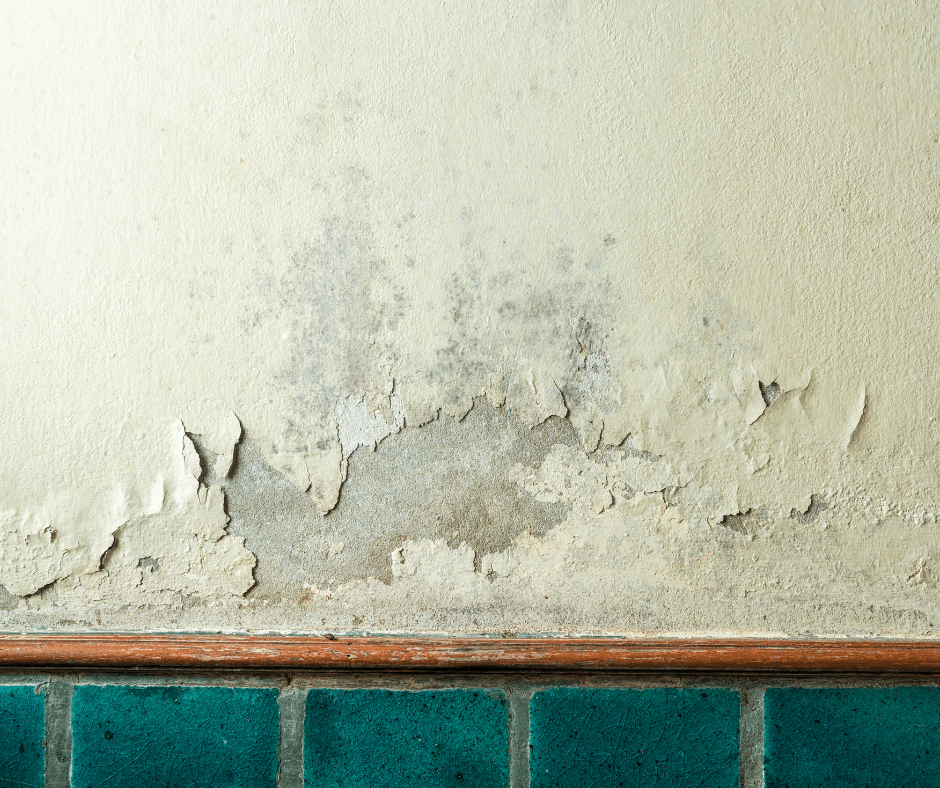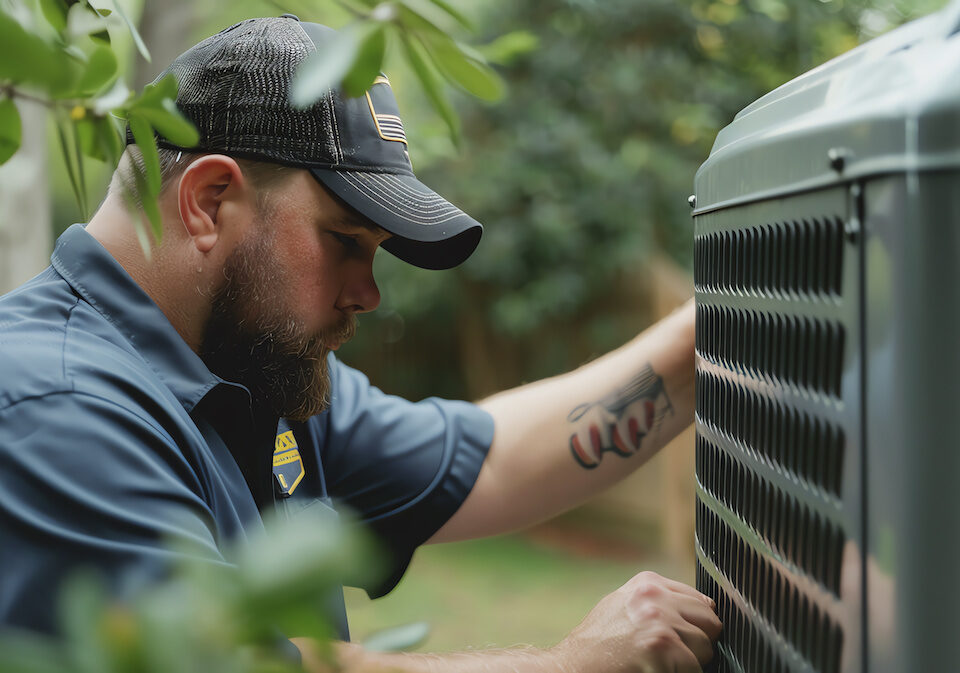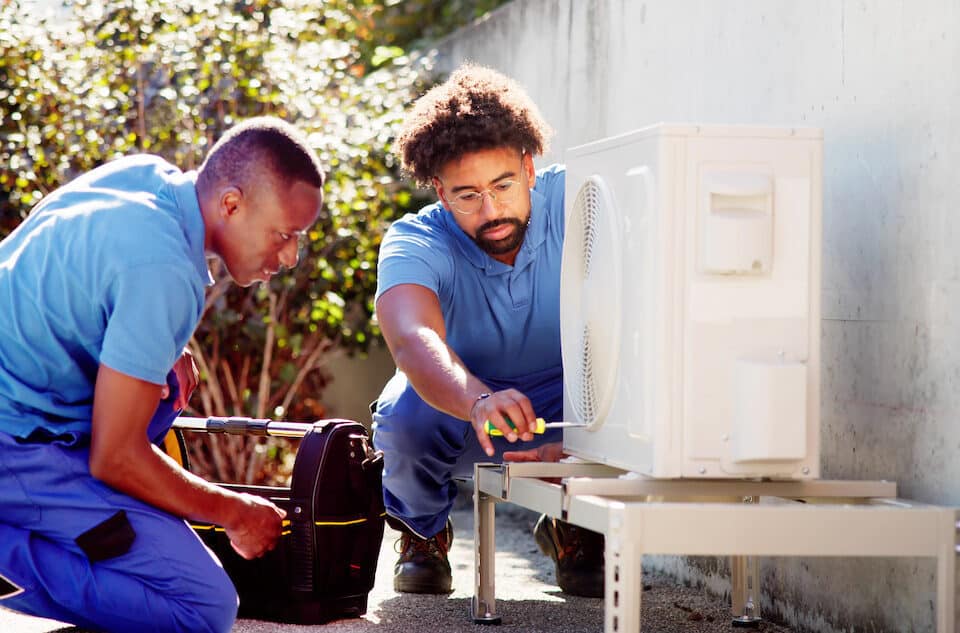Indoor Air Quality and Dew Point Temperatures

Controlled Indoor Dew Point Temperatures
In the winter we warm the building.
In the summer we must keep the building cool.
And you really don’t want to let the indoor humidity rise.
Your clients and staff depend on your HVAC system to provide indoor air quality and comfort to your clients and staff. When we talk about indoor dew point, we’re talking about temperature. This temperature tells us when condensation in the building is likely to occur.
Unfortunately, combined with cool surfaces, condensation, moisture absorption, and mold or organic growth are often a result of high indoor dew points. No one wants condensation in the home.
Here are two important definitions to learn before further understanding dew point temperature.
Dew Point: “The dew point is the temperature to which air must be cooled to become saturated with water vapor. It is assumed that air pressure and water content is constant. When cooled further, the airborne water vapor will condense to form liquid water (dew). When air cools to its dew point through contact with a surface that is colder than the air, water will condense on the surface.” –Wikipedia.com.
Condensation: “Condensation is the change of the state of matter from the gas phase into the liquid phase and is the reverse of vaporization. The word most often refers to the water cycle. It can also be defined as the change in the state of water vapor to liquid water when in contact with a liquid or solid surface.” –Wikipedia.com
The Properties of Dew Point
Our air is composed of both water vapor and dry air properties. The level of water vapor in the air indicates the dew point temperature. And condensation is the result of two properties being in alignment.
- The dew point temperature of the air
- And the surface temperature of any surface in contact with the air.
Condensation forms when a surface has a temperature at or below the dew point temperature.
For example, if the indoor dew point is above 60°F, moisture can condense on colder surfaces in the facility. To be considered comfortable, dew point temperatures typically need to be kept below 62°.
Furthermore, the point of saturation of dew on the air produces a 100° relative humidity. So, the indoor air becomes uncomfortable when the dew point is over 65°, and the humidity is over 80%.

Maintaining Indoor Air Quality and Comfort
The three measurements – temperature, humidity, and dew point – determine what is comfortable inside your place and what is not.
Your air conditioner creates that comfort level by removing both heat and moisture from the indoor air. Indeed, you do not want your commercial business and homes alike to feel clammy with foggy windows and a musty odor.
To ensure your AC is pulling the humidity out and cooling effectively, have your local HVAC service team out. They will balance the system and set the thermostat to the optimal temperatures and dew points for your workplace and even your home.
The Dangers of Condensation Indoors
Not only is it uncomfortable to have your dew point out of balance with the temperature in the building, but it can be a danger too. You see, moisture in the air can begin to condense on cool surfaces like ductwork, chilled water supply lines, windows, or refrigeration systems. And a buildup of condensation will cause damage to the building, interior walls, and merchandise. What’s more, it can promote organic growth like mold and mildew over time.
Did you know that three of the leading causes for building damage over time are:
- Water damage
- Moisture buildup
- Increased humidity
There are a number of places the build of water vapor and condensation causes damage. There can be condensation on the windows dripping down onto the sills. And condensation can accumulate on the condenser inside a building and the plumbing fixtures.
Monitor Indoor Dew Point Temperatures
You can monitor the indoor dew point temperature by using it as a risk indicator. Maintaining a dew point of 60° is critical and should be treated as such. Use the following methods to ensure the safety of your place of business. Your customers will thank you, and so will your employees.
- Dehumidify the air below the suggested 60° temperature when the AC runs.
- Maintain AC drain lines with regular cleaning.
- Make sure your humidifier units are the correct size for the room, installed correctly, and set to maintain to avoid over saturation.
- Keep the HVAC components well insulated to keep their surfaces above the indoor dew point.
Ensure your business is operating safely while reducing the risk of mechanical damage, moisture accumulation, or organic growth with help from your local HVAC professionals.

Indoor Air Quality Maintenance
Cleaning the air you work in and breathe daily is as important as cleaning the rest of the building. There are steps managers can take to keep up with the air quality in the house. Once the system has been balanced and your facility is at the optimal dew point temperature, TRUST Heating and Air recommends the following processes for fresh and clean indoor air.
Change the Filters Regularly
While your HVAC system runs, whether heat or AC, it continually filters the air in the facility. The HVAC unit is responsible for catching the pollutants and allergens in the air. As they reach their limit, they get filled with dust and debris. When they are full, the HVAC unit will be strained and not work nearly as well as with a clean filter.
In fact, there are filters on many of the appliances in your place of business that need changing. Your best air quality comes when all those filters and vents get cleaned and changed regularly.
Utilize Vents in Zones
The vents of the building’s AC system remove humidity that can encourage mold growth and, yep, poor air quality. What’s more, gas stoves can release dangerous contaminants into the air like carbon monoxide and nitrogen dioxide. If cooking, be sure to utilize the vents and fans on the commercial oven and stove.
Soft Surfaces Need a Good Cleaning
Drapes, sofas, rugs, and carpets can act as a filter in your facility. Carpets and sofas are notorious for trapping dust and other particles in their fibers. Drapes store and trap dust particles. Thus, cleaning these items will take the allergens out of the place once the soft surfaces have collected them for you.
Then, shake out the drapes outside or get them dry cleaned. Vacuum carpets and sofas, and wash throw rugs. You will notice the difference in the air in the building right away when you do.
Adding Indoor Plants to Your Facility
Decorating is made easy with a well-placed plant. After all, who doesn’t love a pop of green in their workplace? But indoor plants do more than just improve the aesthetics. They actually clean the air. Plants help naturally recycle air and keep the quality of the air fresher and healthier for your staff and clients.

TRUST Heating and Air Can Help Maintain Dew Point Temperatures
TRUST Heating and Air maintain your HVAC system for all seasons. When humidity fluctuates, we know just how to keep your system running smoothly and the dew point controlled. Improving your indoor air quality is just one of the ways we care for our regular customers.
Call the Experts at TRUST Heating and Air
Our certified technicians are highly-trained, skilled professionals that are courteous to your home’s needs. We will work efficiently to repair, replace, or install your air conditioning system. And we offer first-class comfort and industry-leading expertise exactly when you need it!
We come to you prepared with a stocked truck with parts to repair your air conditioning in a timely, cost-efficient manner. Call our team at TRUST Heating & Air today at 678-498-6276 to schedule an appointment for top-notch air conditioning repair. We have emergency 24/7 services available. Free estimates are offered for all new air conditioning installations.
So, if the air in your workplace is musty, clammy, or just plain damp, let TRUST help. Give us a call or contact us today!



